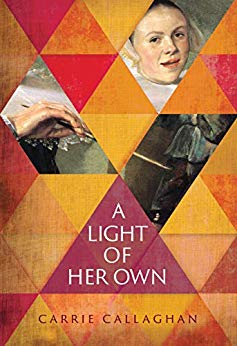
When we meet Judith Leyster, she is a young woman whose parents have left Haarlem in shame following bankruptcy, leaving Judith to make her own way in the world. She is an apprentice in a painter’s workshop, the first such in Holland. We don’t know how she found her way to this situation, but then, what were her options?
For an unmarried woman in 17th century Europe, they were few—even fewer in Protestant countries, where the convent was not an available choice. While widows of merchants could carry on with family businesses, unmarried women were not typically allowed in the guilds. A position as a maid in a household or a tavern offered barely livable wages and left a young woman vulnerable to temptation.
Judith Leyster made clear that she was all too aware of those temptations in her painting, The Proposition. In it, a man offers money to a woman doing needlework. The viewer, knowing full well how this type of woman struggled to eke out a living, must admire the woman’s dogged focus on her needlework—an activity associated with virtue in that place and time. This work, a striking contrast to the paintings of merry-makers and musicians that Judith becomes known for, reveals her fear of what might become of her should she fail at her artistic vocation.
After Judith becomes the first woman allowed in St. Luke’s artist’s guild, she sets up her own light-filled workshop, takes on apprentices, and begins her nascent painting profession. Not as easy as it sounds; she barely scrapes by financially. In subplots, her brother, Abraham, is a constant concern; her friend, Maria, is distancing herself; and Judith feels responsible for the death of a beloved model. Add to these conflicts the shortage of linseed oil, necessary for mixing paints, which drives up the price of this commodity and threatens the livelihood of younger artists.
Historic figures can seem so distant from us that they feel remote, but Carrie Callaghan has brought this historic artist to life. The author has looked at the world through Judith’s eyes, as with this observation: “Men and marriage were like a greedy black pigment, transforming whatever they touch into their own hue.” Judith is independent, so ambitious that she was sometimes careless of her friendships, and clever enough to solve the mystery of the missing linseed oil. Sounds like a contemporary woman, doesn’t she?
Judy Chicago, of The Dinner Party fame, said upon seeing Judith Leyster’s lively self-portrait, “I felt I was seeing my identity as an artist across the ages”. And isn’t that also the mark of successful historical fiction?
